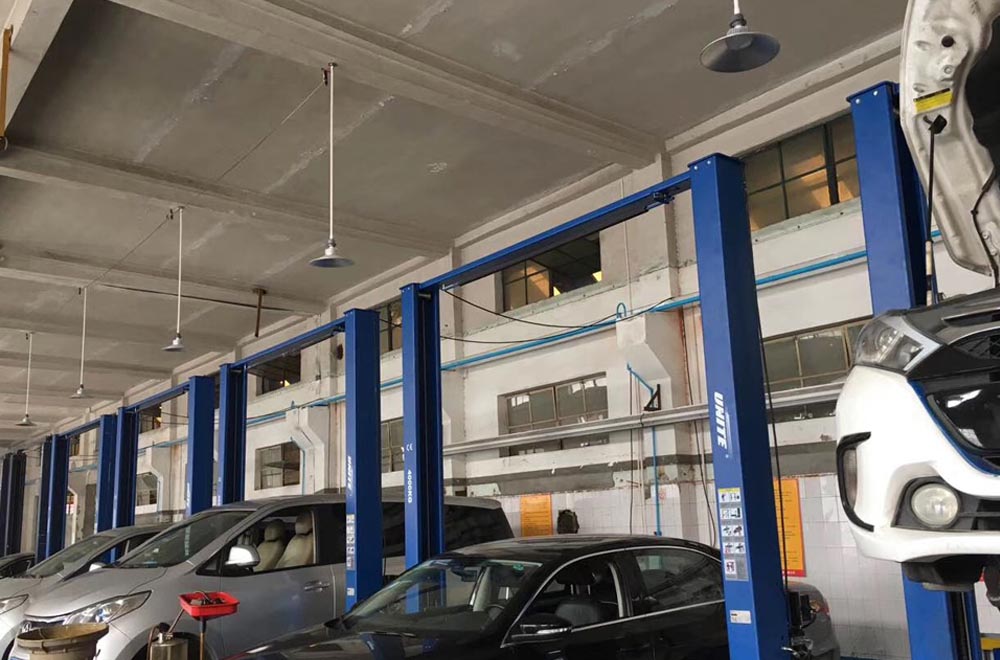2 post car lift is the main type of lifter, is a widely used in cars and other small car maintenance lifting equipment, is one of the common warranty equipment in the automotive repair business. With the development of the car industry and the use of cars and other small cars is becoming increasingly popular, the vehicle maintenance workload will be more and more large, double-column lifter demand will also increase. Here to understand the advantages and disadvantages of 2 post car lift and the use of precautions.
1. Advantages and disadvantages of 2 post car lift
Double-column car lifter is an automotive repair and maintenance units commonly used special mechanical lifting equipment, widely used in cars and other small car repair and maintenance. 2 post car lift has a compact structure, beautiful appearance, easy to operate and other characteristics, so that the repair personnel do not have to drill to the bottom of the car in a narrow space, only with this safe and reliable lifting equipment will be lifted to a certain height of the car, you can quickly to the bottom of the car parts overhaul. Double column car lifter will lift the car in the air at the same time can save a lot of ground space, convenient ground operation. However, in order to maximize the material savings of double column car lifter, generally remove the base plate. Since there is no base plate, the torsion of the column needs to be offset by the ground, so the foundation requirements are very high, and if there is a beam (gantry lifter), it will be offset by the beam.
2. the classification of 2 post car lift
2 post car lift has symmetrical and asymmetrical two kinds. Symmetrical lifter four arm length is roughly equal, so that the car center (or center of mass) in the middle of the column position, for pickup trucks and box trucks and other types of automotive daily maintenance of this symmetrical lifter may be the best choice. However, for some symmetrical two-column lifts that do not have a large enough width between the columns, the inability to open the doors after lifting the car is a major disadvantage.
Asymmetrical lifts have the columns rotated back at an angle (about 30°) and have slightly shorter front arms than the rear arms. When parking the car in the proper position for this asymmetrical lift, the car is moved back a bit, so we can easily get in and out of the car through the doors. Moreover, the rotating columns of this asymmetrical lifter ensure that the center of gravity of the vehicle is safely positioned between the columns.
3. double column type lift use precautions
1, the use of load distribution should be in line with the instructions specified in the rated load distribution of the arm provisions.
2、Before lifting the vehicle, the height of each pallet should be adjusted so that the support point is kept at the same level.
3、The skirt or beam of the vehicle to be lifted must be placed in the center of the pallet, and try to make the center of gravity of the vehicle located at the center of the support surface.
4、After the pallet is in position, make sure the arm is positioned reliably before starting the lifter.
5、When the car lifter rises to 10cm from the ground, check and confirm that the car lifting is safe and reliable, and the lifter operates normally, then start lifting to the required working height. During the lifting process, it is strictly forbidden for anyone to enter under the vehicle.
6、Notice that the power supply can not be reversed, otherwise the limit switch does not work.
7, should be regularly supplemented with lubricating oil to ensure adequate lubrication of the screw nut to prevent early wear.
8, often in the mud, sand, sewage environment, should be in the screw nut sub on the protective cover.
9、Strictly prohibited in the bracket arm placed under the repair tools, auto parts or other items, so as not to damage the lifter.
10, not to change the lifter circuit, in order to avoid failure, resulting in danger and accidental damage.

